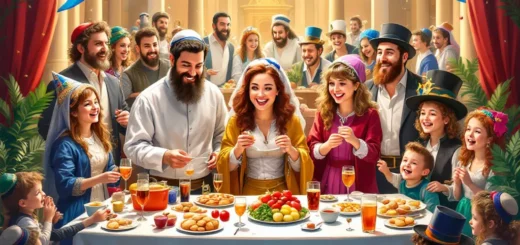Vayakhel (וַיַּקְהֵל—Hebrew for “and he assembled,” the first word in the parashah) Weekly Portion

וַיַּקְהֵל
This article was created with the help of AI and been reviewed by a translator.
Vayakhel is the 22nd weekly Torah portion (Parashat HaShavua) in the annual Jewish cycle of Torah reading. It is part of the Book of Exodus (Shemot) and covers Exodus 35:1 – 38:20. In many years, it is read together with the following portion, Pekudei, creating a double portion. Below is an explanation of the key themes and structure of Vayakhel.
Main Themes and Events in Vayakhel
Moses Convenes the Israelites: The Torah portion begins with Moses gathering (vayakhel) the community of Israel. He conveys the instructions for building the Tabernacle (Mishkan), a portable sanctuary where God’s presence will dwell among the people.
The Commandment of Shabbat: Before discussing the construction of the Tabernacle, Moses reminds the people to observe the Sabbath (Shabbat). This demonstrates the primacy of spiritual rest and devotion to God, even over sacred construction.
Donating Materials for the Tabernacle: The people respond enthusiastically to Moses’ call for contributions. They bring an abundance of materials, including gold, silver, bronze, wool, and precious stones. The Torah highlights how everyone is encouraged to give according to their means.
Appointing the Skilled Workers: Bezalel (from the tribe of Judah) and Oholiab (from the tribe of Dan) are designated as the master craftsmen responsible for supervising the construction of the Tabernacle. They are described as being divinely inspired with wisdom, understanding, and skill.
Building the Tabernacle: The construction of the Tabernacle begins, including the creation of its key components:
The Ark of the Covenant, which will house the Tablets of the Law.
The Menorah (golden lampstand).
The Table of Showbread (a table for holy offerings).
The Altar of Burnt Offering.
The Curtains and coverings that form the structure of the Tabernacle.
Community Participation: The Torah praises the communal effort and unity of the Israelites. Men, women, and leaders alike contribute to the project through labor and materials, demonstrating their collective devotion to God.
Key Insights
Connection Between Shabbat and the Tabernacle: The juxtaposition of Shabbat with the construction of the Tabernacle emphasizes that while creating a sanctuary is important, recognizing God’s sovereignty through rest takes precedence. In Jewish tradition, this connection also becomes the basis for the 39 prohibited forms of labor (melachot) on Shabbat, as they mirror the activities involved in building the Tabernacle.
The Role of Generosity: The outpouring of donations reflects the transformation of the Israelites. Having earlier sinned in the incident of the Golden Calf, they now redirect their wealth and abilities toward a holy purpose.
Leadership and Talent: The emphasis on Bezalel and Oholiab underscores the value of skilled labor and the notion that talent, when used for divine service, is akin to practical wisdom (chochmah).
Atonement and Unity: After earlier divisions and failings (such as the Golden Calf), the communal effort to build the Tabernacle represents reconciliation with God and among the people. Their unity and zeal for this sacred endeavor embody their renewed covenant with God.
Summary of Key Lessons in Vayakhel:
The sanctity of Shabbat as a cornerstone of faith.
The power of generosity and community unity in accomplishing great spiritual tasks.
The importance of God-given skill and wisdom to achieve sacred goals.
The centrality of atonement and dedication in restoring a relationship with the Divine.
Vayakhel serves as a profound reminder of the balance between communal action, spiritual devotion, and the creative pursuit of holiness in everyday life.
Citation:







